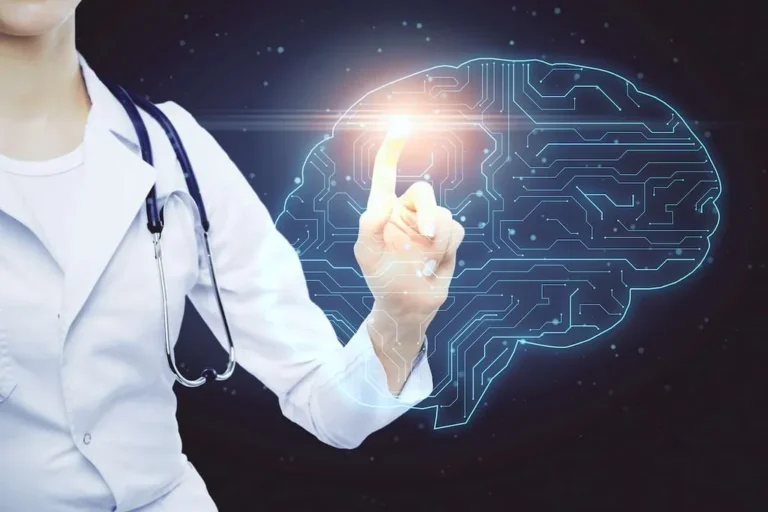The largest LLMs — OpenAI’s o1 and GPT-4, Google’s Gemini, Anthropic’s Claude — prepare on virtually all the available data on the web. As a end result, the LLMs end up learning the syntax of, and much of the semantic data in, written language. Such “pre-trained” fashions could be additional educated, or fine-tuned, to complete subtle duties far beyond easy sentence completion, such as summarizing a posh doc or generating code to play a computer recreation.
Also, provided that expert engineers in these fields are at present a uncommon commodity, hiring them will definitely dent the pockets of these corporations. Another video (see below) predicted that for a model similar to the mind, the training prices could be considerably higher than GPT-3, coming in at around $2.6 billion. A significant limitation of many AI methods is their lack of ability to adapt to small changes in dynamic environments.
The development of AI can worsen the dichotomy between these in energy and those without. It may additionally accelerate the divide between those humans with AI and the unfortunate few without. Rather than people versus AI, the future may appear to be people with AI versus people without. It is that this incapability to adapt that highlights a obtrusive safety flaw that’s yet to be effectively addressed. While sometimes ‘fooling’ these knowledge models could be fun and harmless (like misidentifying a toaster for a banana), in excessive cases (like protection purposes) it may put lives at risk.
The Restrictions Of Artificial Intelligence: What Ai Can’t Do (yet)
While AI has made important progress in current years, there are still many limitations to its capabilities. It is important to handle these limitations to guarantee that AI is developed and deployed in a responsible and helpful means. By acknowledging and addressing these limitations, we are able to create simpler and dependable AI systems ai it ops solution that complement human capabilities, quite than changing them. Additionally, benchmarks would possibly usually be designed to be neither straightforward nor out of reach for the AI methods of the time, since overly straightforward and overly difficult benchmarks are much less more doubtless to generate interesting results.
Challenges In Integrating Prior Knowledge

Overinvesting in a particular materials or sector can put economies in a precarious place. Like metal, AI might run the danger of drawing a lot consideration and monetary assets that governments fail to develop other technologies and industries. Plus, overproducing AI expertise could end in dumping the surplus supplies, which might potentially fall into the arms of hackers and other malicious actors. Many users have utilized the know-how to get out of writing assignments, threatening academic integrity and creativity. Plus, biased AI could possibly be used to determine whether or not a person is appropriate for a job, mortgage, social help or political asylum, producing possible injustices and discrimination, famous Pope Francis. As AI robots turn into smarter and more dexterous, the identical duties will require fewer humans.
In our mind’s eye, we are in a position to image each object, envision its form and size, imagine what it might really feel like to carry it in our arms, and definitively conclude that a toaster weighs more. There are a literally infinite variety of details about how the world works that people come to understand through lived expertise. A one that is worked up to eat a big meal at 7 pm shall be much less excited to eat a second meal at 8 pm. If I ask you for some milk, I would prefer to get it in a glass quite than in a shoe. It is affordable on your pet fish to be in a tank of water however what are the limitations of ai problematic for your phone to be in a tank of water.
Stanford’s most recent AI Index Report catalogues efficiency on twenty-one different benchmarks for AI. And there are a selection of other signs that the story of AI acceleration told by benchmarks is a real one. One of those is the sharp increase within the practical and commercial usefulness of AI systems. Driverless taxis have recently turn out to be a actuality, suggesting that AI vision has gone nicely past labeling clear photographs. Moreover, leveraging AI to automate repetitive duties or assist in crucial purposes calls for human oversight to ensure the models aren’t compromised. The ideas of generalization and slender scope emphasize a key weakness in current AI methods, often categorized as slim AI or weak AI.
The complexity of ethics in dilemmas brings AI development into a responsible context. While regulation is important, extreme regulation can stifle progress, whereas a lack of it can result in unfavorable penalties. Achieving resilient growth in AI requires correct oversight that results in the required laws. The concept that AI may ultimately surpass human intelligence raises significant concerns concerning the potential for a world catastrophe. This idea is often known as https://www.globalcloudteam.com/ the “singularity.” It prompts essential questions on whether or not superintelligent AI could be successfully controlled or governed.
- It’s inherently onerous to responsibly regulate and prepare for technologies that don’t exist but, but in the case of AI, it could be needed.
- Achieving true General AI, where machines can perform any mental task a human can, stays an elusive goal with significant obstacles.
- By understanding the constraints of AI and the boundaries of machine learning, we can create a future where AI is a device that empowers us all.
- AI applications also have difficulty with duties that require frequent sense, corresponding to reasoning about on an everyday basis situations, interpreting ambiguous input, or responding to dynamic, real-world environments where rules aren’t fixed.
- For many tasks, most of the time, this statistical approach works remarkably well.
- Collaborative efforts to grasp human cognition, emulate complicated reasoning, and imbue machines with a broader understanding of the world will contribute to progress in this course.
The tech neighborhood has lengthy debated the threats posed by synthetic intelligence. Automation of jobs, the unfold of pretend information and a harmful arms race of AI-powered weaponry have been talked about as a variety of the greatest dangers posed by AI. As AI grows extra subtle and widespread, the voices warning against the potential risks of artificial intelligence grow louder.

AI does present some vital risks — from job displacement to safety and privacy issues — and inspiring awareness of points helps us have interaction in conversations about AI’s legal, ethical, and societal implications. Addressing the environmental impression of AI involves exploring sustainable practices, energy-efficient algorithms, and accountable utilization of computational resources. Striking a balance between technological advancement and environmental duty is crucial for the future of AI.
Furthermore, as AI continues to evolve, we must stay vigilant in addressing its limitations and potential pitfalls. Ethical frameworks, robust oversight, and a deep understanding of AI’s capabilities and constraints are paramount in shaping a future where this know-how enhances our lives with out compromising our humanity. As we delve deeper into the realm of AI’s limitations, it’s essential to acknowledge the ethical concerns that come up. While AI’s incapability to copy certain human traits could be seen as a limitation, it additionally serves as a safeguard in opposition to potential misuse or unintended penalties. The challenges of AI ethics require a collaborative effort from policymakers, researchers, and industry leaders. They want to establish transparent, accountable, and truthful moral guidelines for growing AI methods, whereas additionally addressing points like bias discount, privateness safety, and security in these techniques.
AI methods are solely as unbiased as the info they are skilled on, so if the information used to coach an AI system is biased, the system may also be biased. To guarantee truthful decision-making, designers and builders of AI methods should consider the potential for bias at each stage of improvement and design the system to make impartial selections based on objective criteria. And it could be very important keep in mind, by the finest way, as we take into consideration all of the exciting stuff that’s going on in AI and machine studying, that the huge majority—whether it’s the methods and even the applications—are principally fixing very particular things. They’re solving natural-language processing; they’re fixing picture recognition; they’re doing very, very specific issues. There’s a huge flourishing of that, whereas the work going toward solving the more generalized issues, whereas it’s making progress, is continuing much, rather more slowly.
This lack of transparency can lead to a lack of belief and acceptance of AI-based choices 2. Moreover, AI systems usually are not all the time able to provide a transparent rationalization for their actions, which can make it troublesome to determine biases, errors, or safety vulnerabilities. In conclusion, while the challenges in AI growth are significant, additionally they present alternatives for innovation and improvement. By focusing on knowledge high quality, model complexity, computational efficiency, and ethical issues, developers can create extra robust and responsible AI systems.
To mitigate privateness dangers, we must advocate for strict data safety laws and protected information handling practices. Recognizing AI as a tool for augmentation quite than alternative is a constructive strategy. Emphasizing collaboration between humans and AI systems leverages the strengths of both, fostering a symbiotic relationship where machines improve human capabilities. Researchers are actively working on developing Explainable AI (XAI) methods to boost the interpretability of AI models. This involves designing algorithms that provide insights into the decision-making process, fostering transparency and belief.